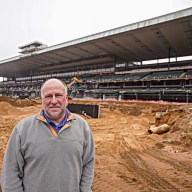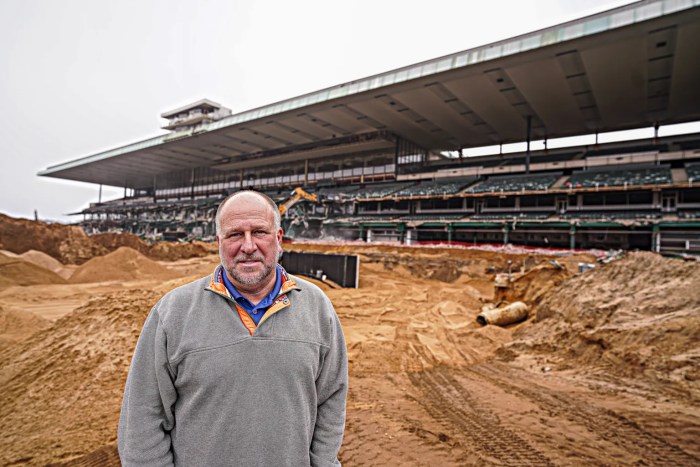Jim and Lori Farmer take their coffee out onto their porch on a cool summer morning and look out over Red Canyon in the Black Hills of South Dakota. Hawks are calling in the distance, but otherwise it is perfectly quiet. The couple breathes in the fresh a
The Farmers both grew up in South Dakota, but they have worked in Chicago and Minneapolis for the past 20 years, so they know the value of tranquility in the morning and the view of constellations spread out across the sky at night. From their porch, they can’t see a building, hear a machine or smell exhaust.
“We have a combination of feeling cozy and protected with the sense of spaciousness and solitude that you get from having a lot of land around you that’s private and part of your own domain,” Jim said. “It’s a pretty rare and luxurious feeling.”
Like many baby boomers, the Farmers have been thinking ahead, not only to their retirement, but to an investment they can enjoy in the meantime, while it appreciates in value. They both already loved western South Dakota, with its moderate climate, fishing streams, skiing and boating. And comparable properties in Colorado, Montana and Utah were quadruple the price.
So a few years ago, they spent months searching the Black Hills for a pristine area in which they could build a cabin that would last them and their family for generations. They found their place on Red Canyon.
But as they watched development in other parts of the Black Hills, they saw stands of trees cut down to make way for houses and mobile homes. The added people, traffic, noise and water use meant stress for the native animals and plants. The Farmers quickly realized that if they wanted to protect the natural beauty and solitude of their own property, they needed to find neighbors similarly interested in preserving the area’s integrity.
So they have acquired 2,680 acres — more than four square miles — of land around them and intend to sell it at auction on July 18 (they also will sell in advance of that date). Their plan includes about 35 home sites of between five and 20 acres that capture the best views of the canyon, mountains, prairie and sky. The rest of the property will be owned in common by the homeowners, who can use it for hiking and horseback riding; it also serves as a buffer zone against other development. The property is adjacent to a 3,800-acre chunk of the Black Hills National Forest, which offers hiking and horseback trails, camping and hunting.
The concept is called conservation development — allowing people to live in natural areas, but at a low density and with great attention to preserving wildlife habitat. In some conservation developments, people own just a few acres for their homes and personal use, but have access to a larger communal area. Deerfield Park, which is also in the Black Hills, has five condos and 20 home sites, with a 65-acre communal area.
That desire to have a home in the country, but without the expense of individually owning a huge tract of land, is also being accommodated on ranches in Montana, Wyoming and Idaho by American Conservation Real Estate. In the “small homestead/large landscape” approach, buyers purchase several acres for their homes, along with a deeded parcel, but have recreational access to the entire ranch. For their part, the ranchers retain agricultural rights to the whole ranch other than the home site, while agreeing not to sell any of the rest of the ranch for development.
Buyers want to see and use the land, but want someone else to have the responsibility of running the whole property properly. “If it’s not managed in a healthy way, it’s going to start to deteriorate in terms of stewardship of the land,” said company president Lane Coulston. And buyers see their purchase as a good investment, as well as a good place to live part or all of the year, he added.
“Even though the stock market has been bad lately, by contrast, values in Montana in land have held up well,” doubling or more every seven years, he said.
The conservation development concept of a large common area works better for the owners than cutting up the land into smaller pieces, Farmer said. “If you buy 40 acres and have two horses, you soon find that it takes you just a few minutes to ride around your 40 acres. The horizon that you think you could ride across endlessly is cropped short, and you’re boxed in,” he said. “That’s why there’s a trend nationwide to have these common lands.”
The Farmers’ plan aims for many conservation development benefits, and strictly written covenants are meant to keep the land from being further developed. There’s a lot to conserve on the Canyon Rim Ranch property: elk, mountain goats, big-horn sheep, antelope, deer, wild turkey, coyotes, hawks, even bald eagles. When the prairie is undisturbed, native grasses grow knee-high, and wildflowers bloom from early spring into the fall.
“There have been times when we’ve had to stop the car, and there’s 100 elk thundering in front of us and the ground shakes,” Farnmer said.
— Courtesy of ARA Content

































